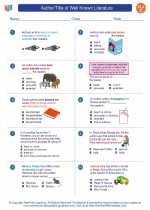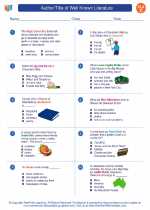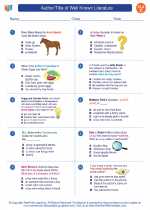Author/Title of Well Known Literature -> the adventures of huckleberry finn
The Adventures of Huckleberry Finn
Overview
"The Adventures of Huckleberry Finn" is a novel written by Mark Twain and published in 1884. It is often considered one of the greatest works of American literature and is a sequel to Twain's earlier novel "The Adventures of Tom Sawyer." The story is set in the Mississippi River Valley and follows the adventures of a young boy named Huckleberry Finn as he escapes from his abusive father and embarks on a journey down the river with a runaway slave named Jim.
Themes
- Racism and Slavery
- Morality and Conscience
- Freedom and Independence
- Social Hypocrisy
Characters
Some of the key characters in the novel include:
- Huckleberry Finn: The protagonist and narrator of the story. He is a young boy who is adventurous and independent.
- Jim: A runaway slave who becomes a father figure to Huck during their journey down the river.
- Tom Sawyer: Huck's best friend who also appears in Twain's earlier novel.
- Pap Finn: Huck's abusive and alcoholic father.
Major Events
Some of the major events in the novel include:
- Huck fakes his own death and escapes from his father.
- Huck meets Jim on Jackson's Island, and they decide to travel down the river together.
- They encounter various characters and have numerous adventures along the way.
- Huck and Jim's friendship is tested as they face challenges and moral dilemmas.
- The novel concludes with a dramatic and unexpected resolution.
Style and Language
Mark Twain's writing style is known for its colloquial language and use of regional dialects. The novel also satirizes the social and moral issues of the time, using humor and irony to make its points.
Study Questions
- How does Huck's relationship with Jim change throughout the novel?
- What role does the Mississippi River play in the story?
- How does Twain use humor and satire to address serious issues?
- What are the moral dilemmas faced by the characters in the novel?
- How does the novel reflect the social and historical context of the time it was written?
Conclusion
"The Adventures of Huckleberry Finn" is a timeless classic that explores themes of freedom, friendship, and morality. Its vivid characters and richly detailed setting make it a compelling and thought-provoking read.
.◂English Language Arts Worksheets and Study Guides Third Grade. Author/Title of Well Known Literature

 Worksheet/Answer key
Worksheet/Answer key
 Worksheet/Answer key
Worksheet/Answer key
